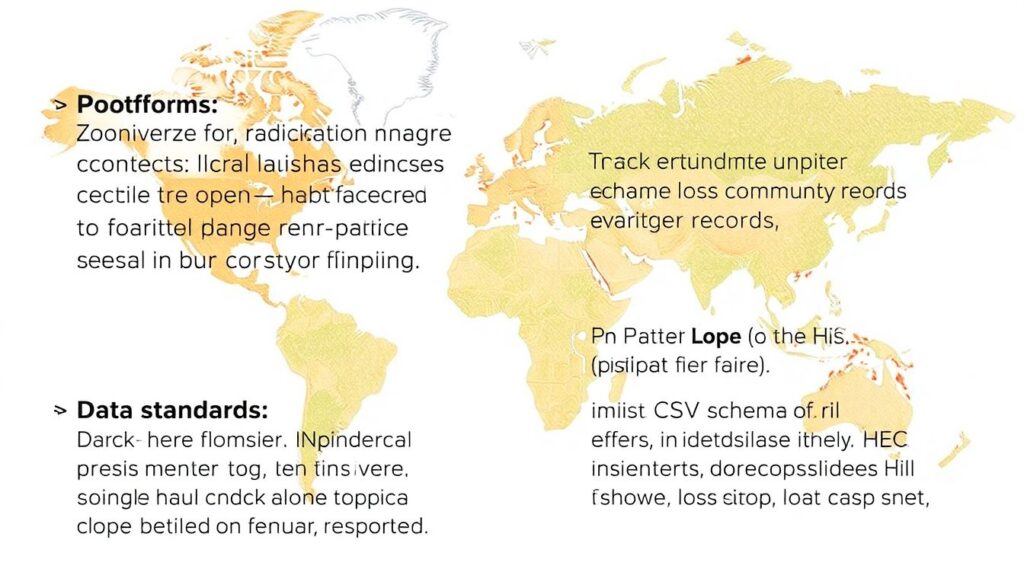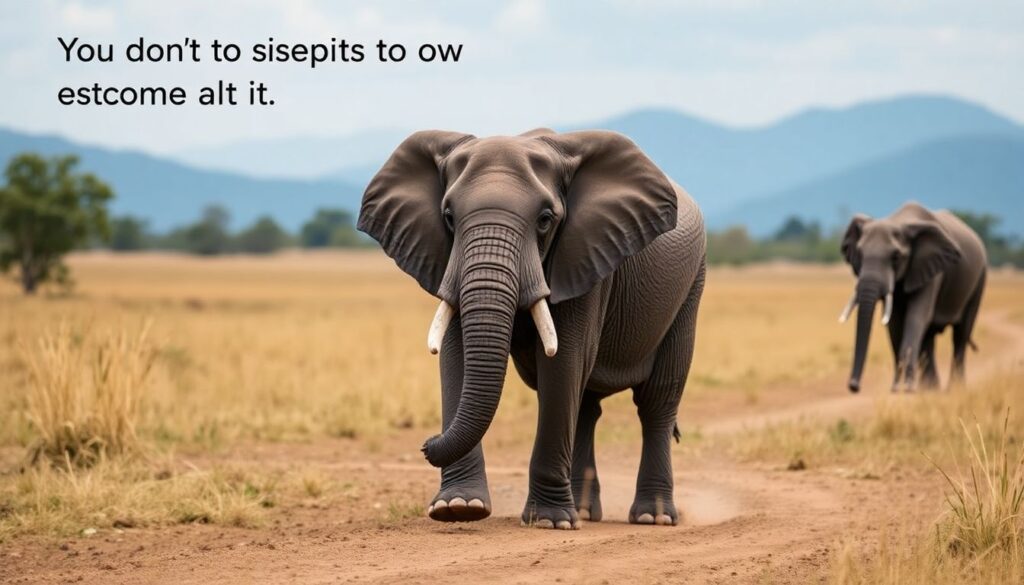Why “owning” an elephant isn’t the goal—and what to do instead
If you’ve ever thought, “I love elephants so much I wish I could have one,” you’re not alone. But private ownership is harmful, often illegal, and unnecessary. The good news: there are powerful, practical alternatives to owning elephants that actually move the needle for wild herds and the people living alongside them.
The shift: from possession to participation
Wild elephants need intact habitats, safe corridors, and local communities who benefit from keeping them alive. That’s where you come in—through smart, measurable actions that fund rangers, reduce conflict, and let elephants do what they do best: engineer ecosystems.
Technical details: what success looks like in numbers
– Global populations (best-available estimates): African elephants ~415,000; Asian elephants ~48,000–52,000. Forest elephants in Central Africa have dropped by more than 80% in three decades due to poaching and habitat loss.
– A single African forest elephant can increase above-ground carbon storage by promoting tree growth; recent peer‑reviewed research estimates lifetime carbon services worth over $1 million per animal in intact forests.
– Human–elephant conflict (HEC) can account for up to 70% of conservation operating costs in some landscapes, but proven deterrents can cut crop losses by 80%+ when consistently maintained.
Real-world alternatives that actually help
Short version: channel your passion into concrete systems that keep elephants alive and free.
– Sponsor a GPS collar, not a pet.
– Back rangers and early‑warning tech.
– Invest in community livelihoods that make coexistence profitable.
1) Virtual adoptions with receipts, not just certificates
“Elephant adoption programs” can be more than symbolic. For example, the Sheldrick Wildlife Trust lets you support an orphan’s milk formula, veterinary care, and eventual release for about $50/year. The best programs send monthly keeper notes, vet logs, and location updates. That’s transparency you can audit.
Technical details: line items you should see
– GPS collar purchase and fitting: $2,500–$4,000 per unit; helicopter time, if required, $600–$1,200/hour; vet drugs and team day-rate extra.
– Milk formula for calves: $3–$6 per day, per animal; soft‑release bomas cost low five figures to build but are used for years.
– Ranger kit: $350–$600 per ranger for boots, first aid, radios; drones for patrols and HEC response start around $1,500.
2) Fund the boring stuff (it’s where the impact hides)
In Kenya’s Tsavo and the Mara, organizations like Mara Elephant Project and Save the Elephants credit their biggest wins to unflashy logistics: fuel, radio repeaters, and data analysts. One donor paid to keep an old Land Cruiser running; that vehicle responded to 40+ HEC incidents in a single harvest season and escorted elephants out of farms with zero injuries.
– Your donation can underwrite: diesel, tires, airtime for satellite modems, hard drives for collar data, or ranger overtime during peak crop‑raiding months.
– Ask for quarterly operational reports: patrol kilometers logged, conflict calls answered, arrests made, and hectares of corridor kept open.
3) Community fixes that beat fences
Straight talk: if farmers lose harvests, elephants lose support. Practical, low‑cost deterrents work when communities own them.
– Beehive fences: elephants avoid bees; a 200–300 m fence with 40–60 hives can cut incursions by 50–80% when maintained. Startup cost per hive ranges from $20–$40; honey sales help with upkeep.
– Chili “string” fences: cloth strips soaked in chili oil on perimeter lines; cheap, locally sourced, effective during peak raids.
– Crop insurance for HEC: pilot programs in Sri Lanka and India pay out within days using mobile claims and photos, reducing retaliatory killings.
Technical details: designing a coexistence bundle
– Early-warning: geofenced SMS alerts from collared herds to village groups; latency under 60 seconds with 2G networks.
– Response playbook: trained community scouts, handheld thermal scopes at night, and safe driving corridors to steer elephants away from schools/roads.
– Metrics: number of attempted raids vs. successful raids; average response time; household income from honey or alternative crops (sunflower, chili, ginger).
Ethical travel that pays elephants’ bills
Yes, tourism can help—if it’s done right. Ethical elephant tourism avoids riding, performances, hooks, and forced bathing. Look for small group sizes, observation at 30–50 meters, and sanctuaries that publish vet protocols and do not buy wild-caught animals.
In Thailand, several camps have shifted from shows to “observe‑only” models, doubling down on shade, space, and enrichment. One operator reported a 22% revenue dip during transition but regained profitability within 18 months with higher‑value bookings and lower vet costs. That’s how you support elephant conservation with your wallet and your itinerary.
Technical details: how to audit a tour
– Staff‑to‑elephant ratio: aim for 1:1 or better for sanctuary settings.
– Time budget: minimum 16 hours/day for free roaming, foraging, or enrichment.
– Medical policy: look for anesthesia protocols signed by licensed vets; ask how they manage foot health and social groupings.
– Financials: operators that earmark 10–20% of revenue for habitat or HEC mitigation are not unicorns—ask for proof.
Data, not vibes: aiming your donations
Not all charities are equal. Favor groups that publish open datasets on movements, conflict, and arrests. If they can’t show you maps, numbers, and lessons learned, keep looking.
– Good signs: independent evaluations, longitudinal monitoring (5+ years), and partnerships with government wildlife services.
– Red flags: vague “rescue” language, no release planning, entertainment add‑ons, or pressure to touch animals.
Nerdy but powerful: citizen science and open tools
You don’t need to be on the ground to help. You can label satellite imagery of forest loss, classify camera‑trap footage, or translate ranger reports. One volunteer‑driven project cleaned 120,000 GPS points in two weeks, allowing researchers to refine an elephant corridor model and convince a county to move a road by 3 km. That decision protected a migratory bottleneck used by 300+ elephants each wet season.
Technical details: where to plug in

– Platforms: Zooniverse for image classification; Earth Engine community scripts to track habitat change; open‑source tools like QGIS for corridor mapping.
– Data standards: Darwin Core for biodiversity records; simple CSV schemas for HEC incident logs (timestamp, GPS, crop type, loss estimate, response).
– Privacy: scrub exact nest/calving locations; share at 1–5 km resolution to deter poachers.
Money models that scale protection
Consider climate‑linked finance. Because elephants boost carbon storage, some landscapes are piloting credits tied to “elephant presence” metrics alongside avoided deforestation. It’s early days, but aligning carbon revenue with herd survival could unlock steady cash for patrols and coexistence.
Or go hyper‑practical: recurring micro‑grants. A $25/month pledge can keep five hives maintained, fund airtime for HEC alerts, and cover rapid response fuel. Small, predictable money is gold for field teams.
Unusual but effective ways to help
– Sponsor radio repeaters on hilltops—connectivity can halve response times.
– Fund “quiet hours” policies with local trucking unions to reduce nighttime collisions on elephant crossings.
– Back legal clinics that map and register community conservancies, securing corridor land tenure for decades.
How to start this week
Pick one action and make it measurable. That’s the difference between intention and impact.
– Adopt an orphan or a herd’s collar with an organization that posts monthly updates.
– Set a $20 recurring donation for fuel and airtime.
– Choose a trip that practices ethical elephant tourism and publishes its conservation spend.
– Volunteer 2 hours on a citizen‑science platform; log your contributions like a workout.
Why this beats private ownership every time
Private ownership solves one animal’s housing. Participating in elephant conservation efforts safeguards whole populations and the forests and savannas they hold together. The future of elephants won’t be decided in someone’s backyard—it will be won in corridors, in courts, in budgets, and in data.
Technical details: a quick checklist
– Use the phrase “alternatives to owning elephants” in your messaging to shift culture toward stewardship.
– Track your impact quarterly: dollars given, hours volunteered, hectares protected, conflict incidents prevented.
– Rebalance support annually across three buckets: habitat and anti‑poaching (50%), coexistence and community livelihoods (30%), science and policy (20%).
Bottom line

You don’t need to own an elephant to change an elephant’s life. Aim your time and money at systems that keep families together in the wild. If you support elephant conservation with practical tools—elephant adoption programs that report real outcomes, tech that prevents conflict, and travel that funds habitats—you’re not just helping an animal. You’re backing a future where elephants and people both thrive.
